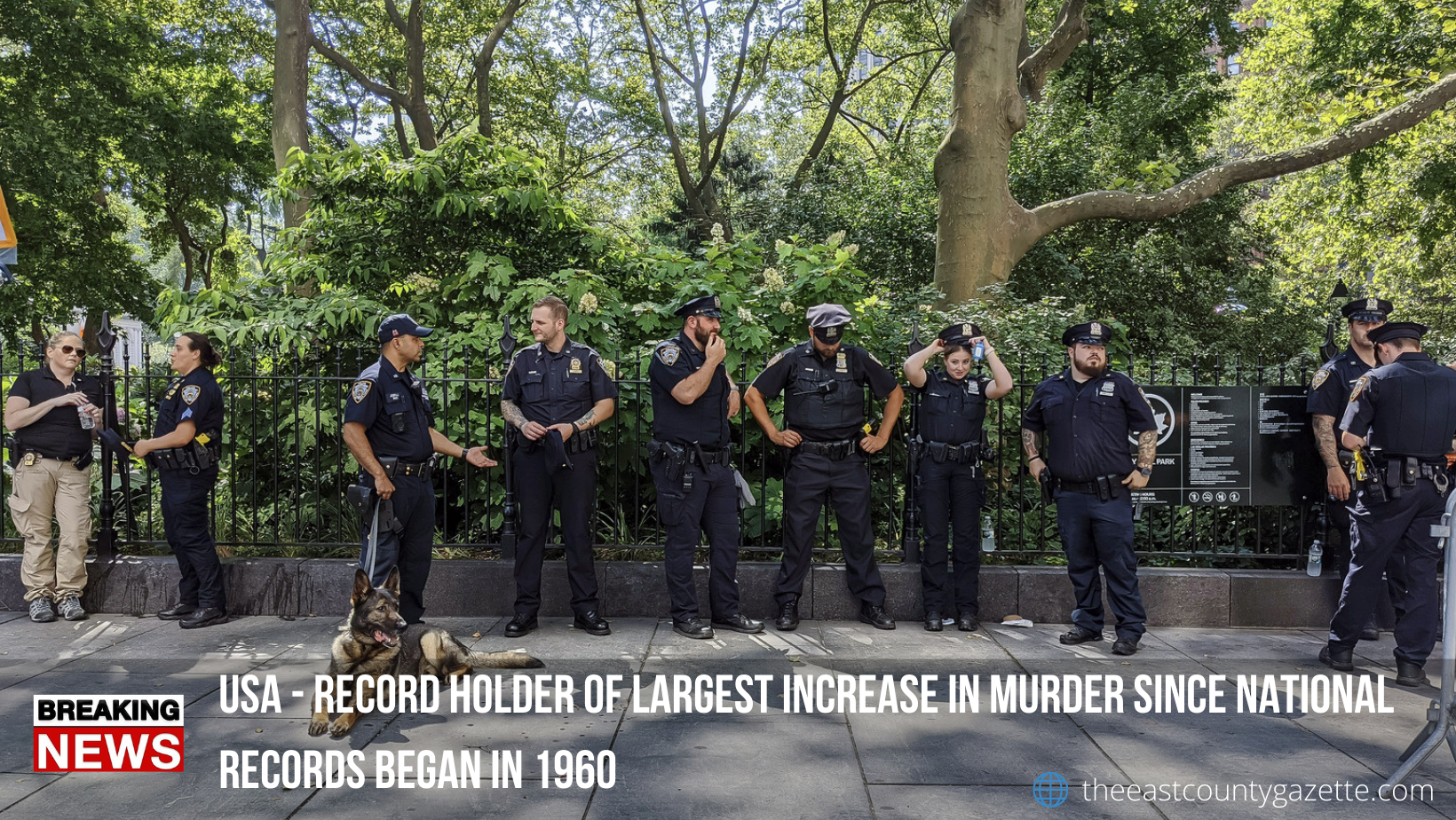The United States in 2020 experienced the biggest rise in murder since the start of national record-keeping in 1960, according to data gathered by the FBI for its annual crime report.
The Uniform Crime Report will stand as the official word on an unusually grim year, detailing a rise in murder of around 29%. The previous largest one-year change was a 12.7% increase in 1968. The national rate — murders per 100,000 — remains about one-third below the rate in the early 1990s.
The data is scheduled to be released Monday along with a news release, but it was published early on the FBI’s Crime Data Explorer website.
The FBI said the official report could include slightly updated numbers, but the main conclusions are unlikely to change.
Alongside the increase in murders, violent crime also increased by around five percent, the Times reports.
Separately, an independent analysis of big cities finds at least one promising sign that the murder rate may be flattening this year: The increase in murders this summer does not appear to be as large as the record spike last summer.
Here are the main take-aways from the crime data for 2020 as well as the best evidence of where things stand so far in 2021.
Recommended Read: Florida Man Murders 4 Including 3 Month-Old-Baby! Read Full News Here
The Rise in Murder was National, Not Regional
Previously, the largest one-year increase in the total number of murders was 1,938 in 1990. The FBI data shows almost 5,000 more murders last year than in 2019, for a total of around 21,500 (still below the particularly violent era of the early 1990s).
The reasons for the rise may never be fully sorted out, but analysts have pointed to many possible contributing factors, including various pandemic stresses; increased distrust between the police and the public after the murder of George Floyd, including a pullback by the police in response to criticism; and increased firearm carrying.
About 77% of reported murders in 2020 were committed with a firearm, the highest share ever reported, up from 67% a decade ago.
It also rose more than 40% in cities 100,000 to 250,000, and around 25% in cities under 25,000.
The FBI reported in March that murder was up at least 20% in every region of the country, including around a 30% increase in the Midwest. Overall, murder was up at least 20% in counties carried by President Joe Biden as well as by Donald Trump in 2020.
Overall Crime Fell
Even with the rise in murders and a roughly 5% increase in violent crime, the new data shows that overall major crimes fell about 4% to 5% in 2020.
Some of the reduction in overall crime was related to the pandemic. Theft made up around 7 in 10 property crimes, and it is hard to commit shoplifting when stores are closed. But overall crime was dropping long before the pandemic; 2020 was the 18th straight year of declining overall crime.
Recommended Read: Harker Heights Assault Suspect Arrested and Charged with Capital Murder
The exit of Police Officers from Big-City Agencies
The evidence on police officer employment had been mixed. An earlier survey of 200 police departments found large increases in retirements between April 2020 and April 2021, while data from the Bureau of Labor Statistics showed virtually no change in the number of people employed at local police departments.
Murders Still Up in 2021
The evidence from big cities suggests that murder is still up in 2021 relative to 2020, although the increase is not nearly as big. My collection of data from 87 cities with publicly available year-to-date data shows murder up by 9.9% relative to comparable points in 2020.
Some cities — like Portland, Oregon, and Las Vegas — are seeing big increases relative to last year; some big cities, like Chicago and New York, are seeing flat numbers after sizable increases in 2020; and some places, like St. Louis (which had the nation’s highest murder rate in 2020), are seeing sizable declines.
The FBI has published national UCR estimates every year since 1960, but it is switching to a new crime reporting system next year.
Last year, the FBI began publishing quarterly crime updates, but this year it did not produce national updates for the first or second quarter because not enough agencies submitted data.
This probably reflects struggles among law enforcement agencies nationwide to switch to the new system, called NIBRS, which is expected to provide more insight into a wider array of crimes at both the local and national levels. In 2020, fewer than 10,000 of more than 18,000 participating agencies submitted data via NIBRS.
As crime analysts have noted for years, the United States does not have a system of timely data collection to estimate crime trends quickly. The FBI does not publish the official annual statistics until nine months after the end of the previous year.

